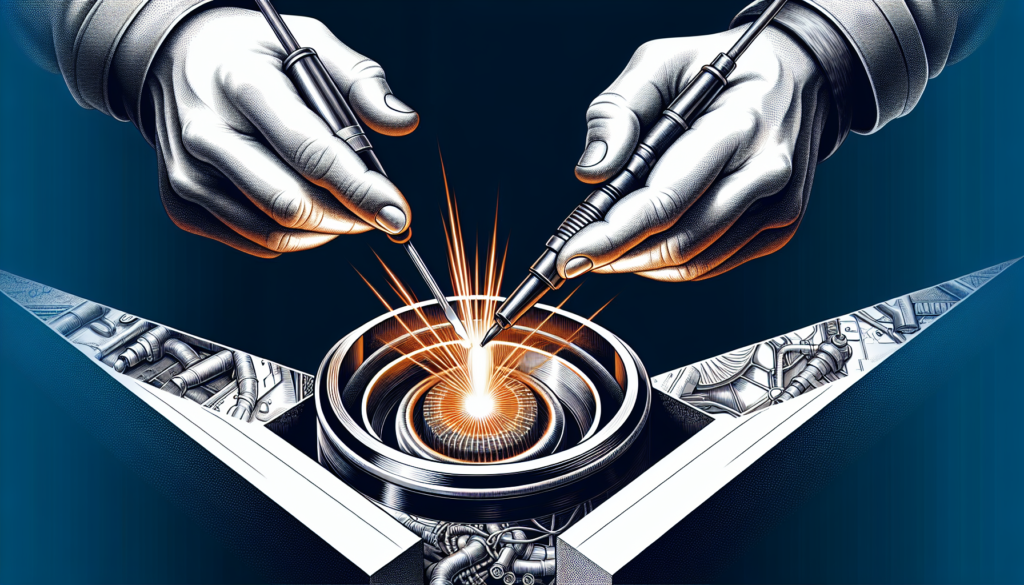Imagine a world where fixing damaged plastic items becomes a breeze, where cracks and breaks can be effortlessly repaired. That world is closer than you think, thanks to the revolutionary new product called “Plastic For Welding.” With its extraordinary strength and versatility, Plastic For Welding is set to revolutionize the way we approach plastic repairs. Whether you are a DIY enthusiast or a professional welder, this innovative solution will become your go-to tool for restoring and reinforcing plastic objects of all shapes and sizes. Say goodbye to expensive replacements and hello to a cost-effective and sustainable solution with Plastic For Welding.
Plastic for Welding
Plastic welding is a versatile and efficient method used to join pieces of plastic together. It offers numerous benefits, making it a popular choice in various industries. In this article, we will explore the different types of plastic suitable for welding, the benefits of plastic welding, common welding processes, preparation steps, the required equipment and tools, techniques for effective welding, best practices to follow, applications of plastic welding, and safety precautions to ensure a secure working environment.

Overview of Plastic Welding
Plastic welding is a process that involves melting and fusing two or more plastic components together to create a strong and durable bond. This technique eliminates the need for mechanical fasteners or adhesives and provides a seamless joint between the plastic parts. Whether you are working in the automotive, construction, or manufacturing industry, plastic welding offers a reliable method for joining plastic components.
Types of Plastic for Welding
Different types of plastics require specific welding techniques due to variations in their melting points and chemical makeup. Some common plastics suitable for welding include polyethylene (PE), polypropylene (PP), polyvinyl chloride (PVC), acrylonitrile butadiene styrene (ABS), and polycarbonate (PC). It is important to identify the type of plastic you are working with before choosing the appropriate welding process.
Benefits of Plastic Welding
Plastic welding offers several advantages over other joining methods. Firstly, it creates a strong bond between plastic parts that is resistant to impact, vibration, and environmental stress. This results in a durable and long-lasting joint. Additionally, plastic welding eliminates the need for additional materials, such as screws or adhesives, reducing costs and simplifying the manufacturing process. Plastic welding also allows for greater design flexibility, as it can create a seamless, aesthetically pleasing appearance.
Common Welding Processes
There are various plastic welding processes available, each suited to different types of plastic and applications. Some common methods include hot gas welding, ultrasonic welding, spin welding, vibration welding, and laser welding. Hot gas welding involves heating plastic pieces with a hot air stream and then pressing them together to form a bond. Ultrasonic welding uses high-frequency sound waves to generate heat and create a fusion between plastic components. Spin welding rotates one part against another, causing friction and creating a weld. Vibration welding uses friction and pressure to weld the plastic parts together, while laser welding utilizes a laser beam to melt and fuse the plastics.

Preparation for Plastic Welding
Proper preparation is crucial for a successful plastic welding process. Firstly, ensure that the plastic surfaces to be welded are clean and free from any contaminants such as dirt, grease, or moisture. Thoroughly clean the surfaces using a suitable solvent or detergent. Next, carefully inspect the plastic pieces for any cracks, defects, or inconsistencies that may affect the welding process. It is essential to have smooth and even surfaces to ensure a strong and reliable weld. Finally, if necessary, roughen or bevel the edges of the plastic pieces to enhance the welding area.
Equipment and Tools for Plastic Welding
To perform plastic welding effectively, you will need specific equipment and tools. The exact requirements will depend on the welding process chosen and the type of plastic being welded. Some common tools include a plastic welding gun or extruder, a hot air blower, welding rods or beads, clamps, files, scrapers, and a safety mask. Ensure that you have the appropriate equipment for your specific welding needs and follow the manufacturer’s instructions for proper usage.
Techniques for Plastic Welding
The chosen welding technique determines the specific techniques used during the welding process. However, some general techniques apply to most plastic welding methods. When using a hot gas welding technique, ensure a steady welding speed and maintain the correct temperature for melting the plastic. For ultrasonic welding, apply sufficient pressure to create a strong bond and ensure consistent vibrations throughout the process. Spin welding requires proper alignment of the rotating part and applying adequate pressure to achieve a secure weld. Vibration welding demands careful control of amplitude and frequency, while laser welding requires precise positioning and focus of the laser beam.
Best Practices for Plastic Welding
Following best practices during the plastic welding process is essential to ensure optimal results. Firstly, select the correct welding process and technique based on the type of plastic and the desired outcome. Properly prepare the plastic surfaces by cleaning and inspecting them thoroughly. Ensure that the welding equipment is in good working condition and set to the appropriate settings. During the welding process, maintain a steady welding speed, apply consistent pressure, and monitor the temperature to prevent overheating or underheating. After completing the weld, allow sufficient time for cooling and solidification before handling the plastic components.
Applications of Plastic Welding
Plastic welding finds applications in various industries and sectors. It is commonly used in automotive repairs, where it allows for seamless repairs of plastic components such as bumpers, interior panels, and fuel tanks. Plastic welding is also prevalent in construction, enabling the fabrication and repair of plastic pipes, tanks, and roofing materials. Additionally, it is utilized in the manufacturing industry to join plastic parts in products ranging from consumer electronics to medical devices. The versatility and strength of plastic welding make it an indispensable technique in many sectors.
Safety Precautions for Plastic Welding
Working with plastic welding requires strict adherence to safety precautions to prevent accidents and ensure a secure working environment. Always wear appropriate personal protective equipment (PPE), including safety goggles, gloves, and a respiratory mask. Establish proper ventilation in the workspace to remove any fumes emitted during the welding process. Avoid direct skin contact with hot plastic or welding tools to prevent burns. Additionally, familiarize yourself with the specific safety guidelines provided by the equipment manufacturer and maintain a clean, organized workspace to minimize hazards.
In conclusion, plastic welding offers a reliable and efficient method for joining plastic components. Understanding the different types of plastic suitable for welding and choosing the correct welding process and technique are crucial to achieving strong and durable bonds. By following the necessary preparation steps, utilizing the required equipment and tools, and practicing best welding practices, you can ensure successful plastic welding projects. Always prioritize safety by wearing appropriate PPE and taking precautionary measures. With its numerous advantages and wide range of applications, plastic welding is an invaluable process in various industries.
